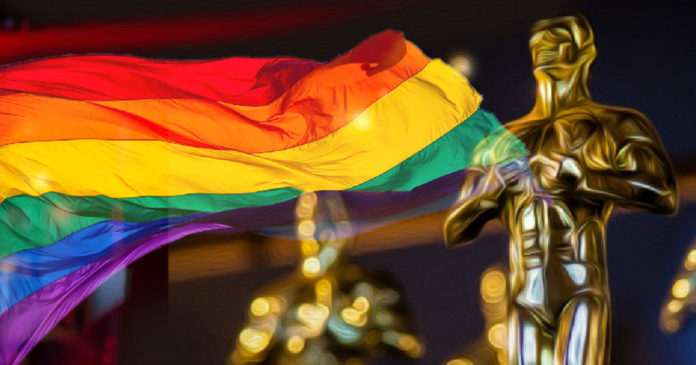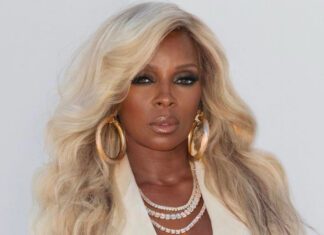The Academy Awards, or more popularly known as the Oscars, has been making it their mission to break the norms of the annual award show. Specifically, they have focused on the elements of diversity and inclusion all across the board. They are continuing these changes with their Academy Aperture 2025 initiative.
According to Hypebeast, the Academy of Motion Picture Arts and Sciences has announced a new set of inclusion and representation standards that must be met for a film to be eligible for the Best Picture category. This is a great move for minority creators in the film industry as it gives an equal opportunity for all to be recognized for their work.
The new standards include four different categories, and films must meet a minimum of two of the four starting in 2024. The requirements goes as followed:
STANDARD A: ON-SCREEN REPRESENTATION, THEMES AND NARRATIVES
To achieve Standard A, the film must meet ONE of the following criteria:
A1. Lead or significant supporting actors
At least one of the lead actors or significant supporting actors is from an underrepresented racial or ethnic group.
• Asian
• Hispanic/Latinx
• Black/African American
• Indigenous/Native American/Alaskan Native
• Middle Eastern/North African
• Native Hawaiian or other Pacific Islander
• Other underrepresented race or ethnicity
A2. General ensemble cast
At least 30% of all actors in secondary and more minor roles are from at least two of the following underrepresented groups:
• Women
• Racial or ethnic group
• LGBTQ+
• People with cognitive or physical disabilities, or who are deaf or hard of hearing
A3. Main storyline/subject matter
The main storyline(s), theme or narrative of the film is centered on an underrepresented group(s).
• Women
• Racial or ethnic group
• LGBTQ+
• People with cognitive or physical disabilities, or who are deaf or hard of hearing
STANDARD B: CREATIVE LEADERSHIP AND PROJECT TEAM
To achieve Standard B, the film must meet ONE of the criteria below:
B1. Creative leadership and department heads
At least two of the following creative leadership positions and department heads—Casting Director, Cinematographer, Composer, Costume Designer, Director, Editor, Hairstylist, Makeup Artist, Producer, Production Designer, Set Decorator, Sound, VFX Supervisor, Writer—are from the following underrepresented groups:
• Women
• Racial or ethnic group
• LGBTQ+
• People with cognitive or physical disabilities, or who are deaf or hard of hearing
At least one of those positions must belong to the following underrepresented racial or ethnic group:
• Asian
• Hispanic/Latinx
• Black/African American
• Indigenous/Native American/Alaskan Native
• Middle Eastern/North African
• Native Hawaiian or other Pacific Islander
• Other underrepresented race or ethnicity
B2. Other key roles
At least six other crew/team and technical positions (excluding Production Assistants) are from an underrepresented racial or ethnic group. These positions include but are not limited to First AD, Gaffer, Script Supervisor, etc.
B3. Overall crew composition
At least 30% of the film’s crew is from the following underrepresented groups:
• Women
• Racial or ethnic group
• LGBTQ+
• People with cognitive or physical disabilities, or who are deaf or hard of hearing
STANDARD C: INDUSTRY ACCESS AND OPPORTUNITIES
To achieve Standard C, the film must meet BOTH criteria below:
C1. Paid apprenticeship and internship opportunities
The film’s distribution or financing company has paid apprenticeships or internships that are from the following underrepresented groups and satisfy the criteria below:
• Women
• Racial or ethnic group
• LGBTQ+
• People with cognitive or physical disabilities, or who are deaf or hard of hearing
The major studios/distributors are required to have substantive, ongoing paid apprenticeships/internships inclusive of underrepresented groups (must also include racial or ethnic groups) in most of the following departments: production/development, physical production, post-production, music, VFX, acquisitions, business affairs, distribution, marketing and publicity.
The mini-major or independent studios/distributors must have a minimum of two apprentices/interns from the above underrepresented groups (at least one from an underrepresented racial or ethnic group) in at least one of the following departments: production/development, physical production, post-production, music, VFX, acquisitions, business affairs, distribution, marketing and publicity.
C2. Training opportunities and skills development (crew)
The film’s production, distribution and/or financing company offers training and/or work opportunities for below-the-line skill development to people from the following underrepresented groups:
• Women
• Racial or ethnic group
• LGBTQ+
• People with cognitive or physical disabilities, or who are deaf or hard of hearing
STANDARD D: AUDIENCE DEVELOPMENT
To achieve Standard D, the film must meet the criterion below:
D1. Representation in marketing, publicity, and distribution
The studio and/or film company has multiple in-house senior executives from among the following underrepresented groups (must include individuals from underrepresented racial or ethnic groups) on their marketing, publicity, and/or distribution teams.
• Women
• Racial or ethnic group
- Asian
- Hispanic/Latinx
- Black/African American
- Indigenous/Native American/Alaskan Native
- Middle Eastern/North African
- Native Hawaiian or other Pacific Islander
- Other underrepresented race or ethnicity
“The aperture must widen to reflect our diverse global population in both the creation of motion pictures and in the audiences who connect with them,” said Academy President David Rubin and Academy CEO Dawn Hudson. “The Academy is committed to playing a vital role in helping make this a reality. We believe these inclusion standards will be a catalyst for long-lasting, essential change in our industry.”
Read the full terms and policies HERE.









